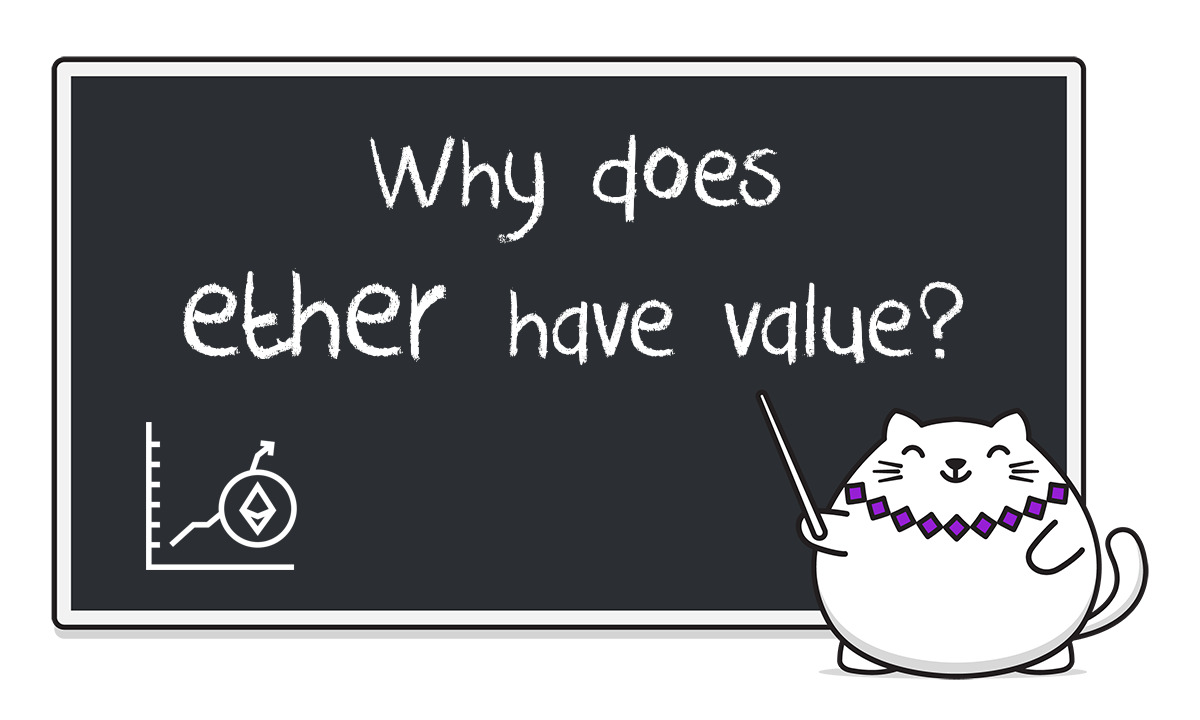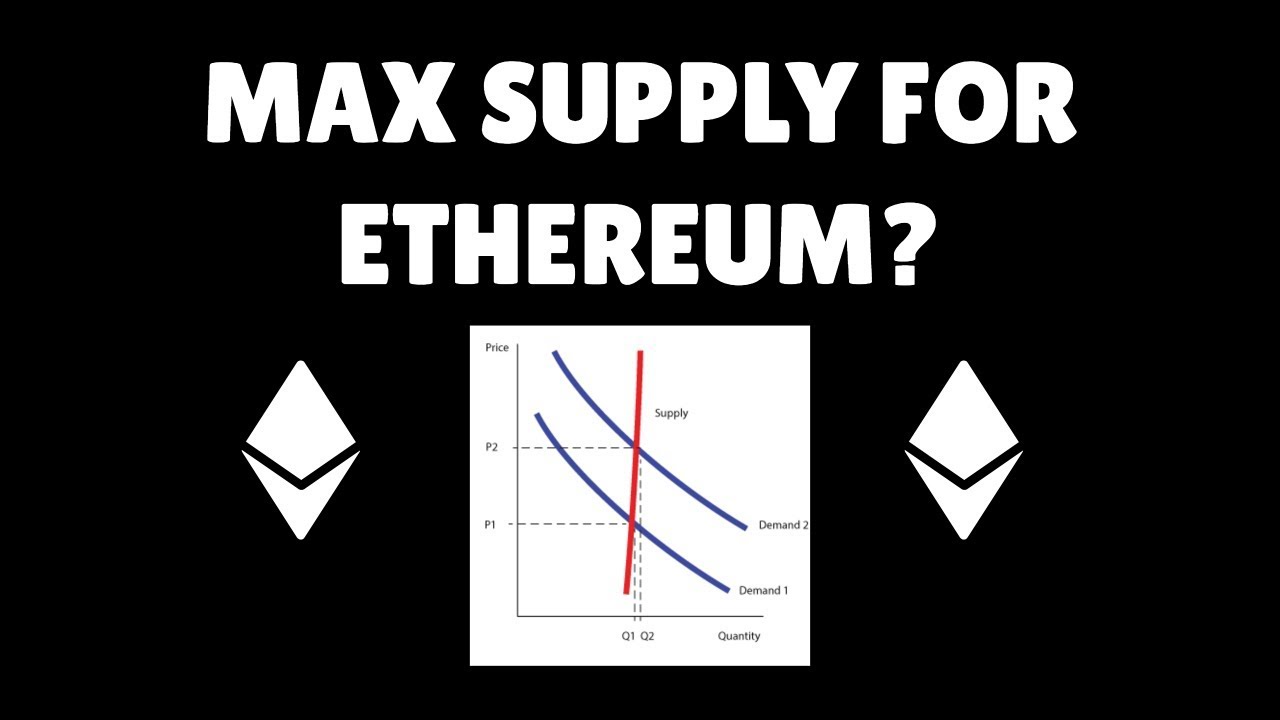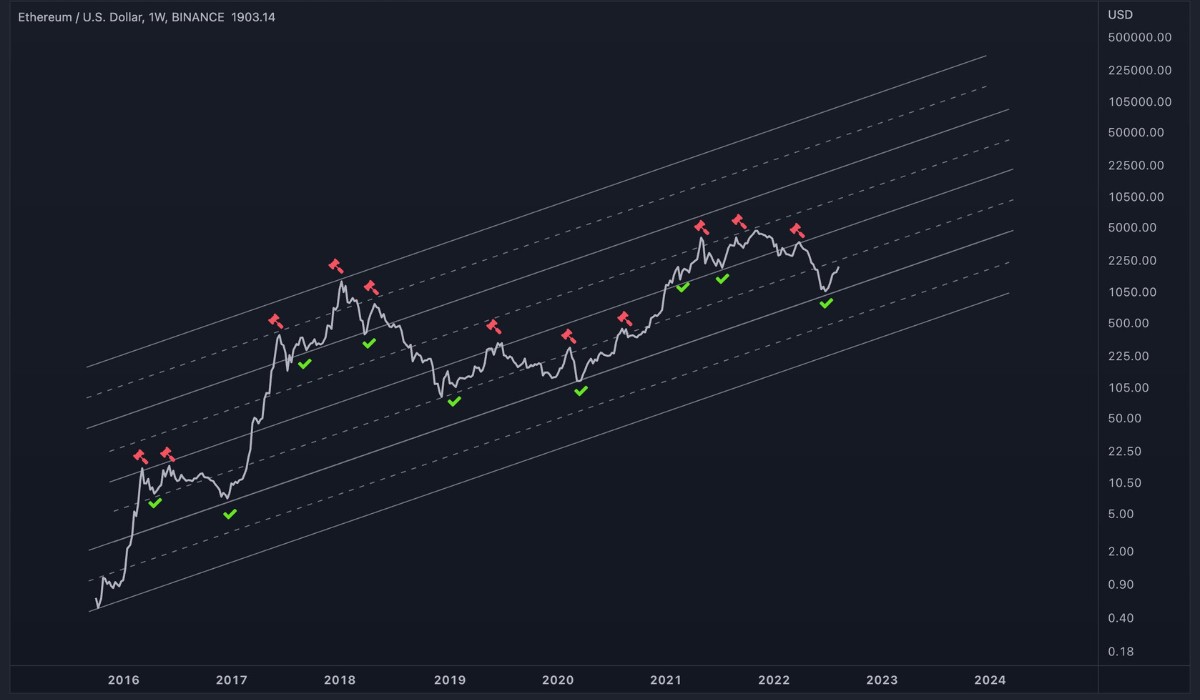Introduction
Welcome to the world of Ethereum! In recent years, Ethereum has gained significant attention and recognition as one of the most popular cryptocurrencies. But what exactly is Ethereum and why does it have value? In this article, we will explore the fascinating world of Ethereum and uncover the reasons behind its value.
At its core, Ethereum is a decentralized blockchain platform that enables the creation and execution of smart contracts. While Bitcoin paved the way as the pioneer of blockchain technology, Ethereum took it a step further by introducing a programmable blockchain. This means that developers can build and deploy decentralized applications (DApps) on the Ethereum network.
Blockchain technology is the underlying infrastructure that powers Ethereum. It is essentially a distributed ledger that records and verifies transactions across multiple computers, ensuring transparency and security. Unlike traditional centralized systems, blockchain operates in a decentralized manner, eliminating the need for intermediaries and providing a trustless environment.
One of the key factors that contribute to the value of Ethereum is its ability to execute smart contracts. Smart contracts are self-executing contracts with predefined conditions and rules, coded on the blockchain. These contracts automatically execute once the specified conditions are met, without the need for intermediaries or manual intervention. This automation not only reduces costs and improves efficiency but also enhances trust and eliminates the risk of fraud.
Ethereum’s functionality extends beyond just executing smart contracts. The platform also enables the development of decentralized applications (DApps) and the issuance of digital assets known as tokens. This opens up a world of possibilities, allowing developers to create innovative solutions such as decentralized finance (DeFi) applications, gaming platforms, and even digital art marketplaces.
Another crucial factor that contributes to Ethereum’s value is the network effects it has established. With a large and growing community of developers, users, and projects built on top of Ethereum, the network effect strengthens its overall ecosystem. This creates a positive feedback loop where the value of Ethereum increases as more people adopt and use the platform.
What is Ethereum?
Ethereum is an open-source, decentralized blockchain platform that facilitates the creation and execution of smart contracts. Launched in 2015 by Vitalik Buterin, Ethereum has quickly become one of the leading platforms for building decentralized applications (DApps) and deploying blockchain solutions.
At its core, Ethereum is a distributed ledger that enables peer-to-peer transactions in a transparent and secure manner. Similar to Bitcoin, Ethereum operates on a blockchain, which is a chain of blocks containing transactional data. However, Ethereum takes it a step further by introducing a programmable blockchain. This means that developers can create and publish smart contracts on the Ethereum network.
Smart contracts are self-executing contracts with predefined rules and conditions. They are coded onto the Ethereum blockchain, which ensures their automatic execution without the need for intermediaries. These smart contracts can be used for a variety of purposes, including digital identity verification, supply chain management, financial transactions, and more. The flexibility and programmability of Ethereum make it a powerful tool for creating innovative solutions across various industries.
One significant difference between Ethereum and other cryptocurrencies is its native currency, ether (ETH). Ether serves as the fuel for running applications on the Ethereum network. It is used to compensate participants who validate and process transactions, as well as to pay for computational resources required by smart contracts.
Ethereum uses a consensus mechanism called Proof of Stake (PoS) to secure its network. In PoS, validators are chosen to create new blocks and validate transactions based on the amount of ether they hold and are willing to lock up as collateral. This energy-efficient approach to consensus allows Ethereum to process a higher number of transactions per second compared to traditional proof-of-work blockchains like Bitcoin.
Overall, Ethereum represents a significant advancement in blockchain technology. Its programmable nature, wide range of use cases, and growing community make it a highly valuable platform in the world of cryptocurrencies. As the adoption of decentralized applications and smart contracts continues to expand, Ethereum is likely to cement its position as one of the key players in the blockchain industry.
The Blockchain Technology
The blockchain is the underlying technology that powers Ethereum and many other cryptocurrencies. It is a decentralized and distributed ledger that records and verifies transactions across multiple computers, known as nodes. The blockchain operates on a consensus mechanism, where participants agree on the validity of transactions and the ordering of blocks.
Unlike traditional centralized systems, the blockchain operates without a central authority or intermediary. This decentralized nature ensures transparency, immutability, and security, making it a reliable and tamper-proof system. By eliminating the need for intermediaries, the blockchain enables peer-to-peer transactions and reduces costs associated with third-party involvement.
At its core, a blockchain consists of blocks that contain transactional data. Each block is linked to the previous block using cryptographic hashes, forming a chain of blocks. This linking mechanism ensures the integrity of the data, making it virtually impossible to alter previous blocks without being detected.
One of the key features of blockchain technology is transparency. Every transaction that occurs on the blockchain is visible to all participants. This transparency enhances trust and allows for public verification of transactions. It also enables auditing and accountability, as all transactions are permanently recorded on the blockchain and can be traced back to their origin.
Immutability is another crucial aspect of blockchain technology. Once a transaction is added to a block and verified by the network, it becomes nearly impossible to modify or reverse. This immutability ensures the integrity of data and prevents fraud, making blockchain ideal for applications where tamper-proof records are required.
Security is a fundamental aspect of blockchain technology. The distributed nature of the blockchain makes it highly resistant to hacking and fraud. In order to manipulate the blockchain, an attacker would need to control a majority of the network nodes, which is extremely difficult and resource-intensive to achieve in a well-established blockchain network.
Blockchain technology has far-reaching potential beyond cryptocurrencies. It can be used for various applications such as supply chain management, identity verification, decentralized finance, and more. The ability to create and execute smart contracts on the blockchain further expands its capabilities, enabling automation of complex agreements and workflows.
In summary, the blockchain is a revolutionary technology that underpins Ethereum and other cryptocurrencies. Its decentralized and transparent nature, along with its immutability and security, make it a powerful tool for building trustless and efficient systems. As blockchain technology continues to evolve, we can expect to see its widespread adoption across industries and the transformation of traditional business processes.
Decentralization and Trust
Decentralization and trust are two fundamental principles that make blockchain technology, including Ethereum, so revolutionary. Traditional systems often rely on centralized authorities, such as banks or governments, to facilitate and verify transactions. However, the decentralized nature of blockchain technology eliminates the need for intermediaries, allowing for a more transparent and trustless environment.
In a decentralized system, there is no central authority controlling or governing the network. Instead, the network consists of numerous nodes, each holding a copy of the blockchain and participating in the verification and validation process. Every transaction is verified by multiple nodes, ensuring consensus and preventing a single point of failure.
Decentralization enhances transparency by making the entire transaction history available to all participants. This transparency allows for public scrutiny and verification of transactions, reducing the risk of fraud and corruption. Rather than relying on blind trust in a centralized authority, participants can independently verify and validate transactions on the blockchain themselves.
Trust is a crucial factor in any financial or business transaction. However, traditional systems often require trust to be placed in third-party intermediaries. With blockchain technology, trust is instead placed in the system itself, which operates based on predetermined rules and protocols. Transactions on the blockchain are executed automatically and transparently, removing the need to rely on the integrity and honesty of intermediaries.
The immutability of the blockchain further reinforces trust. Once a transaction is recorded on the blockchain, it becomes nearly impossible to alter or manipulate. This immutability ensures the integrity of data and prevents fraudulent activities. Anyone can verify the authenticity of a transaction by simply examining the blockchain, increasing trust among participants.
The combination of decentralization and trust in blockchain technology has powerful implications. It opens up new possibilities for financial inclusion, as individuals can participate in the network without the need for a traditional banking system. It also enables peer-to-peer transactions without the need for intermediaries, reducing costs and increasing efficiency.
Blockchain-based systems like Ethereum are particularly advantageous in environments where trust is scarce. For example, in countries with unstable governments or unreliable financial systems, blockchain technology can provide a secure and transparent alternative for conducting transactions and storing value.
Overall, decentralization and trust are fundamental concepts that underpin blockchain technology. By removing the need for intermediaries and enabling transparent and secure transactions, blockchain technology has the potential to revolutionize industries and reshape the way we conduct business in the future.
Smart Contracts Capabilities
One of the key features and driving forces behind Ethereum’s value is its ability to execute smart contracts. Smart contracts are self-executing contracts with predefined rules and conditions coded onto the Ethereum blockchain. They enable automated and trustless interactions between parties, eliminating the need for intermediaries and enhancing efficiency in various industries.
Smart contracts can perform a wide range of functions and have several notable capabilities:
Automation: Smart contracts automate the execution of predefined actions once the specified conditions are met. This eliminates the need for manual intervention and reduces the potential for human error. For example, a smart contract could automatically release funds to a supplier once the delivery of goods is confirmed.
Decentralized Execution: Smart contracts are executed on the Ethereum network, which is a decentralized and distributed system. This means that the contract’s execution is not dependent on a single party or central authority. The decentralized nature of smart contracts enhances transparency, security, and trust by removing the need for intermediaries.
Autonomy: Once deployed on the Ethereum network, smart contracts operate autonomously and are immutable. They cannot be altered or tampered with, providing a high level of security and trust in transactions. Parties involved can confidently rely on the smart contract’s predetermined conditions and outcomes.
Efficiency and Cost Reduction: Smart contracts eliminate the need for intermediaries, such as lawyers or escrow agents, in certain transactions. This not only reduces costs but also speeds up processes by removing the need for manual and time-consuming tasks. By automating contractual processes, smart contracts increase overall efficiency and streamline business operations.
Transparency and Auditability: The transparent nature of the blockchain allows all participants to view and verify the terms and execution of smart contracts. This transparency enhances trust between parties and enables auditing of transactions. Anyone can examine the blockchain and verify the integrity of smart contract transactions, increasing transparency and accountability.
Complex Business Logic: Smart contracts have the capability to execute complex business logic, allowing for more sophisticated and intricate agreements. They can handle multi-step processes, conditional statements, and various parameters to execute actions as desired. This versatility opens up a vast range of possibilities for creating innovative decentralized applications and business solutions.
Smart contracts have significant implications across various industries, including finance, supply chain management, insurance, real estate, and more. They provide a more efficient and secure way to conduct transactions and execute agreements, reducing costs, improving trust, and enabling new business models to flourish.
In summary, the capabilities of smart contracts on the Ethereum network contribute to its value proposition. These contracts automate processes, ensure decentralization and transparency, reduce costs, and enable more complex and secure agreements. As the adoption of smart contracts continues to grow, Ethereum’s potential for disrupting traditional systems and unlocking innovative applications becomes even more apparent.
Ethereum’s Functionality
Ethereum offers a wide range of functionality that sets it apart in the world of blockchain technology. While it is primarily known as a platform for executing smart contracts, Ethereum’s capabilities extend beyond that, making it a versatile and powerful ecosystem.
At the core of Ethereum’s functionality is its ability to execute smart contracts. These contracts are self-executing agreements with predefined rules and conditions coded onto the Ethereum blockchain. With the use of the Solidity programming language, developers can create complex smart contracts to automate a wide variety of processes across different industries.
Ethereum’s functionality goes beyond just executing smart contracts. The platform also provides a decentralized virtual machine (EVM) that runs on the Ethereum network. The EVM allows developers to deploy and execute decentralized applications (DApps) on the Ethereum blockchain. This functionality enables the creation of innovative solutions in areas such as decentralized finance (DeFi), gaming, supply chain management, and more.
One of the key advantages of Ethereum’s functionality is its interoperability. Ethereum’s open architecture allows for seamless integration with other blockchain networks. This means that assets and data from different blockchains can be easily exchanged and utilized within the Ethereum ecosystem. The interoperability of Ethereum enables greater flexibility and collaboration among different blockchain platforms.
Ethereum also provides a standardized token protocol called ERC-20, which allows developers to create and issue their own digital tokens on the Ethereum network. These tokens can represent various assets, including cryptocurrencies, utility tokens, or even ownership rights to physical assets. The ERC-20 standard has become the industry standard for token creation and has contributed to the widespread adoption of Ethereum in the world of Initial Coin Offerings (ICOs).
Another aspect of Ethereum’s functionality is its support for decentralized finance (DeFi) applications. DeFi utilizes smart contracts to create financial instruments, such as decentralized lending and borrowing platforms, decentralized exchanges, and stablecoins. These applications remove the need for intermediaries, making financial transactions more efficient, transparent, and accessible to a global audience.
Ethereum’s functionality is augmented by its robust developer community. The platform has a vast array of development tools, libraries, and frameworks, making it easier for developers to build and deploy applications on the Ethereum network. These resources contribute to the growth of the Ethereum ecosystem and foster innovation in the blockchain space.
In summary, Ethereum’s functionality encompasses the execution of smart contracts, the deployment of decentralized applications, interoperability with other blockchain networks, the creation of tokens through ERC-20, and the support for decentralized finance applications. These capabilities make Ethereum a powerful and flexible platform that continues to drive innovation and reshape industries.
Ethereum’s Use Cases
Ethereum’s versatility and functionality have paved the way for numerous innovative use cases across various industries. As a decentralized blockchain platform, Ethereum enables the development of decentralized applications (DApps) and the execution of smart contracts, opening up a world of possibilities. Here are some of the key use cases of Ethereum:
Decentralized Finance (DeFi): Ethereum has become a hotbed for decentralized finance applications. DeFi applications leverage smart contracts to offer financial services such as decentralized lending and borrowing, decentralized exchanges, prediction markets, and yield farming. By eliminating the need for intermediaries, DeFi aims to provide transparent, open, and accessible financial solutions to individuals globally.
Supply Chain Management: Ethereum can revolutionize supply chain management by introducing transparency, traceability, and automation. Smart contracts on Ethereum can track and verify the movement of goods, ensuring authenticity and reducing fraud. This transparent and tamper-proof system enhances trust among all parties involved, streamlines processes, and improves efficiency in supply chain operations.
Identity Verification and Personal Data Security: Ethereum-based solutions can provide more secure and decentralized identity verification systems. By using unique cryptographic signatures, individuals can prove their identity without relying on centralized authorities. Additionally, Ethereum’s blockchain can enable secure storage and sharing of personal data, giving individuals control over their information while ensuring privacy and security.
Decentralized Applications (DApps): Ethereum’s functionality as a DApp platform allows developers to create a wide range of applications. DApps can revolutionize industries such as gaming, social media, content publishing, voting systems, and more by removing the need for trust in intermediaries and providing users with greater control over their data and digital assets.
Tokenization and Asset Management: Ethereum’s ERC-20 token standard enables the creation and issuance of digital assets, including cryptocurrencies, utility tokens, and even tokenized versions of physical assets. These tokens can represent ownership rights, certificates, or even access to exclusive services. By digitizing assets and utilizing smart contracts, Ethereum enables more efficient and secure asset management.
Decentralized Governance: Ethereum’s technology can also improve governance systems. By utilizing voting mechanisms and smart contracts, decentralized and transparent decision-making processes can be implemented. This allows for community-driven decision-making in decentralized organizations, making governance more inclusive and reducing corruption and manipulation.
Internet of Things (IoT): Ethereum can play a significant role in the integration of blockchain technology with IoT devices. By allowing IoT devices to communicate and transact in a decentralized manner, Ethereum can improve security, data integrity, and interoperability among connected devices. Smart contracts on Ethereum can automate interactions and enable secure and transparent sharing of data between different IoT devices.
Ethereum’s use cases extend beyond the examples mentioned above. The platform’s capabilities, combined with the creativity and innovation of developers, continue to unlock new possibilities in various sectors, including healthcare, energy, education, real estate, and more. As Ethereum continues to evolve, we can expect to see further growth and widespread adoption of its use cases, transforming industries and empowering individuals and businesses alike.
Network Effects
Network effects play a crucial role in the success and value of Ethereum. A network effect occurs when the value of a network or platform increases as more people join and use it. In the case of Ethereum, network effects contribute significantly to its adoption, functionality, and overall ecosystem.
As the Ethereum network continues to grow and attract more participants, it becomes more valuable and useful for various stakeholders. Here are some key aspects of network effects in Ethereum:
Developer Community: Ethereum has a vibrant and active developer community. More developers using Ethereum means more talent and innovation poured into the platform. This leads to the creation of new applications, improvements in developer tools, and the discovery of innovative use cases. The larger and more active the Ethereum developer community, the stronger the network effect becomes.
Decentralized Applications (DApps): The network effect is particularly evident in the proliferation of DApps built on the Ethereum platform. As more DApps emerge, they attract users and developers, forming a positive feedback loop. Users are drawn to Ethereum because of the wide range of available applications, while developers are incentivized to build on Ethereum due to the large user base. As both users and developers increase, the overall value and utility of Ethereum as a platform skyrocket.
Liquidity and Trading: Liquidity is crucial for any financial system, and Ethereum benefits from network effects in terms of liquidity. As more people participate in Ethereum, there is an increase in trading volume and liquidity for Ether (ETH) and various other tokens built on the Ethereum blockchain. Higher liquidity attracts more traders and investors, making Ethereum more attractive and robust as a financial ecosystem.
Infrastructure and Interoperability: Network effects also apply to the infrastructure and tools available for Ethereum. As the ecosystem grows, more services and platforms emerge to support developers and businesses utilizing Ethereum. From wallets and exchanges to decentralized oracle networks and scaling solutions, the expanding infrastructure increases the usability and interoperability of Ethereum, making it more attractive for adoption.
Economic Incentives: Network effects create economic incentives for participants to join and contribute to the Ethereum network. Miners are rewarded with Ether for validating transactions and securing the network. Token holders benefit from the increasing value of Ether and other tokens built on Ethereum. These economic incentives encourage more people to actively participate in the network, reinforcing the network effect.
Collaboration and Standards: Network effects foster collaboration and the establishment of standards within the Ethereum ecosystem. Developers, entrepreneurs, and industry players come together to share knowledge, collaborate on projects, and create best practices. This collaboration strengthens Ethereum’s overall ecosystem and ensures the interoperability and compatibility of different Ethereum-based solutions.
Overall, network effects are a critical driver of Ethereum’s value and growth. As more users, developers, applications, and infrastructure join the Ethereum network, the network effect amplifies the benefits and utility of Ethereum. This positive feedback loop contributes to the ongoing success and expansion of Ethereum, solidifying its position as a leading blockchain platform.
Support and Adoption
Ethereum has witnessed remarkable support and adoption since its launch, cementing its position as one of the most widely used blockchain platforms. The support and adoption of Ethereum can be seen through various factors that contribute to its success and ongoing growth.
Developer Community: Ethereum benefits from a strong and passionate developer community. The Ethereum community is comprised of talented individuals who contribute their expertise and innovation to the advancement of the platform. This active developer community leads to the creation of new decentralized applications (DApps), improved developer tools, and constant updates and enhancements to the Ethereum ecosystem.
Industry Partnerships: Ethereum has formed strategic partnerships with leading companies, startups, and industry players across various sectors. These partnerships promote the adoption and utilization of Ethereum in different industries. Collaborations range from financial institutions leveraging Ethereum’s technology for decentralized finance (DeFi) applications to supply chain companies utilizing smart contracts for transparent and efficient tracking.
Enterprise Adoption: Ethereum has gained significant traction in the enterprise sector. Many large corporations, including multinational companies, are exploring and implementing Ethereum-based solutions. Enterprises are drawn to Ethereum’s robustness, security, and flexibility for building private or consortium blockchains. The adoption of Ethereum by enterprises adds credibility and drives further interest in the platform.
Developer Tools and Infrastructure: Ethereum benefits from a robust ecosystem of developer tools and infrastructure. From programming languages like Solidity to developer-friendly IDEs (integrated development environments) and testing frameworks, the Ethereum ecosystem provides support for developers to build and deploy DApps quickly and efficiently. This supportive infrastructure contributes to the growing adoption of Ethereum as developers find it easier to develop on the platform.
Community Engagement: Ethereum has a passionate and engaged community of supporters and enthusiasts. The community actively contributes to the growth and development of the ecosystem through education, awareness, and advocacy. This active engagement helps spread knowledge about Ethereum and attracts more individuals and businesses into the Ethereum ecosystem.
Tokenization and Initial Coin Offerings (ICOs): Ethereum’s ERC-20 token standard has become the industry standard for creating and issuing tokens. The flexibility and ease of creating tokens on Ethereum have led to a surge in tokenization and ICOs. This tokenization trend has further driven adoption as more projects and startups choose Ethereum as their preferred platform to raise funds and tokenize their assets.
Marketplace and Exchanges: Ethereum enjoys widespread support from cryptocurrency exchanges and marketplaces. Being one of the oldest and most prominent blockchain platforms, Ethereum is widely recognized and listed by numerous exchanges. This broad availability and liquidity of Ether (ETH) encourage more people to buy, trade, and use Ethereum’s native cryptocurrency.
Collectively, these factors contribute to Ethereum’s support and adoption. The active developer community, strategic partnerships, enterprise adoption, robust developer tools and infrastructure, engaged community, tokenization trend, and availability on exchanges all create a positive environment for Ethereum’s growth and usage across industries and user bases.
Ethereum’s Supply and Demand
In understanding the value and dynamics of Ethereum, it is essential to consider the factors of supply and demand. Ethereum’s supply and demand dynamics are influenced by various elements that contribute to its pricing and market dynamics.
Supply: Ethereum’s supply is determined by its issuance mechanism. Unlike Bitcoin, which has a capped supply of 21 million coins, Ethereum does not have a maximum supply limit. However, there is an annual issuance cap, currently set at 18 million ETH, which helps control inflation. The Ethereum network follows a concept called “uncle blocks,” which provides additional rewards to miners who include blocks that are not part of the main chain. This issuance mechanism ensures a constant and sufficient supply of ETH to support the network’s operations and incentives for miners.
Demand: Ethereum’s demand is driven by various factors, including its use as fuel for executing smart contracts and its role as a medium of exchange within the Ethereum ecosystem. The demand for Ethereum is influenced by the growth of decentralized applications (DApps) built on the Ethereum platform, the adoption of Ethereum for tokenization and Initial Coin Offerings (ICOs), and the emergence of decentralized finance (DeFi) applications that rely on Ethereum for various financial services.
The demand for Ethereum is also influenced by broader market dynamics. As cryptocurrencies gain wider acceptance and adoption, more individuals and institutions are looking to invest in digital assets. Ethereum’s position as one of the leading cryptocurrencies makes it an attractive investment option for those seeking exposure to the cryptocurrency market.
Additionally, market sentiment, investor confidence, and regulatory developments can impact the demand for Ethereum. Positive news, partnerships, and technology advancements often generate increased interest and demand, driving the price of Ethereum upward. Conversely, negative news or regulatory uncertainties can create sell-offs and temporary decreases in demand.
It is worth noting that Ethereum’s supply is not solely dependent on mining issuance. Ethereum can also be acquired through purchasing and trading on cryptocurrency exchanges, direct investments in ICOs, and participating in decentralized finance protocols that offer yield farming or lending opportunities. These varying sources of supply contribute to the overall dynamics of Ethereum’s market.
The relationship between supply and demand affects Ethereum’s price. When demand outpaces supply, the price tends to rise, and conversely, when supply surpasses demand, the price may decline. Ethereum’s price is determined by the market forces of buyers and sellers interacting on cryptocurrency exchanges, where supply and demand determine the equilibrium price.
As the Ethereum ecosystem continues to evolve and attract more users, developers, and applications, it is likely to positively impact both the supply and demand dynamics. Growth in adoption and utility of Ethereum’s technology can increase demand, potentially leading to higher prices. However, it is important to recognize that cryptocurrency markets are highly volatile, and the interplay between supply and demand can be influenced by a multitude of factors beyond the scope of this discussion.
In summary, Ethereum’s supply is driven by its issuance mechanism, while its demand is influenced by market adoption, utility, and investor sentiment. The balance between supply and demand determines the price of Ethereum and is subject to various internal and external factors. Understanding these dynamics can provide insights into the valuation and market behavior of Ethereum.
Conclusion
Ethereum has established itself as a leading blockchain platform with significant value and potential. Its functionality, support, and adoption have contributed to its success and ongoing growth. The ability to execute smart contracts, build decentralized applications, and create a thriving ecosystem has positioned Ethereum at the forefront of blockchain innovation.
Ethereum’s value is derived from its technology, which offers transparency, security, and automation through its decentralized and programmable blockchain. The adoption of Ethereum in various industries, such as decentralized finance, supply chain management, and identity verification, highlights its versatility and potential for disruption.
The network effects surrounding Ethereum play a crucial role in its value proposition. A strong developer community, industry partnerships, and engaged users contribute to Ethereum’s growth and functionality. Furthermore, the supply and demand dynamics of Ethereum are driven by factors such as its issuance mechanism, the adoption of DApps, and broader market trends.
Looking ahead, Ethereum faces both opportunities and challenges. The development of Ethereum 2.0, a major upgrade that will introduce scalability and security improvements, is expected to further enhance the platform’s capabilities and drive adoption. However, it also needs to address scalability issues and potential regulatory concerns to sustain its growth and appeal in the ever-changing blockchain landscape.
As Ethereum continues to evolve, it has the potential to revolutionize industries, reshape traditional systems, and provide new avenues for innovation. With its extensive functionality, strong community support, and market adoption, Ethereum is well-positioned to remain a prominent player in the blockchain space.
While the future of Ethereum is uncertain, one thing is clear – its impact has already been significant and will continue to shape the future of decentralized technologies.

























